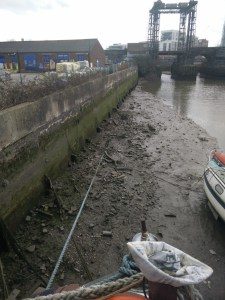Battlemesh 09 was the latest in a series of intensive exchanges organised and attended by the prime of mesh firmware developers, hardware hackers and community activists – An international movement of open wireless network innovation with it’s root in the earliest moments of net culture.
More than 80 contributors from Korea, Colombia, India, Argentina and across Europe gathered at the Faculty of Engineering in the University of Porto (Portugal) for a week in the deep code of OLSR, Babel, B.A.T.M.A.N, BMX and Batman-ADV, each contenders for eternal glory!
All use the OpenWRT operating system first issued at the outbreak of contemporary mesh networking in 2004, when discovery of GPL code in the very affordable Linksys WRT54G router triggered release of it’s proprietary sources for open re-engineering.
 Each afternoon lightning talks and presentations were held in a space between the busy workgroups. We listened to memorable accounts from international groups and community actions, a film première of Sarantaporo documentary (Greece) and reviewed GNUnet and netJason projects two of many others listed in the packed event schedule. Our hosts even arranged us a cruise on the Douru River with spectacular views, bridges and fresh air!
Each afternoon lightning talks and presentations were held in a space between the busy workgroups. We listened to memorable accounts from international groups and community actions, a film première of Sarantaporo documentary (Greece) and reviewed GNUnet and netJason projects two of many others listed in the packed event schedule. Our hosts even arranged us a cruise on the Douru River with spectacular views, bridges and fresh air!
 Work progressed on setup of the Battlemesh ‘Wibed’ testbed, itself an ambitious and complex set of configurations, to allow for easy switching between competing firmware to enable monitoring of the 30 or so wireless routers now dotted about the university. Inevitable bugs obstructed completion but we start to see results at the eleventh hour, hoorah!
Work progressed on setup of the Battlemesh ‘Wibed’ testbed, itself an ambitious and complex set of configurations, to allow for easy switching between competing firmware to enable monitoring of the 30 or so wireless routers now dotted about the university. Inevitable bugs obstructed completion but we start to see results at the eleventh hour, hoorah!
Key members of the OpenWRT developers group gathered to announce it’s community reboot as new project LEDE which resolves to shake off legacy constrictions in the operational structure of the old system. There was widespread delight mixed with a sense of some trepidation this news should schism the project.  Overall it seems, this is an overdue shift toward a more flexible approach to future development of firmware for embedded devices, so good luck with that!
Overall it seems, this is an overdue shift toward a more flexible approach to future development of firmware for embedded devices, so good luck with that!
Overshadowing the event for all this year is the news that FCC have followed steps taken at EU to legislate a lockdown of firmware on equipment (RED) featuring 5ghz wireless devices, so that critical weather and aviation radar systems cannot be compromised by non standard radio uses. New hardware will not permit firmware modification and improvements by community in the future will no longer be possible! It’s hard to follow the exact conditions that have lead to this unfortunate situation, certainly manufactures have taken flight and entirely re factored their products to adhere to the rules as they understand them, in fear of heavy fines should they fail.
Suspicions were voiced, that telecom interests have influenced authorities to revise controls allowing them capture pubic access spectrum for more exclusive commercial uses. Here is the joint statement from the wireless network community, more needs to be done to highlight the situation.
 Though our initial work with Minesweeper Collective as part of Mazi project pilot in Deptford Creek, we have talked a lot about how improvements to energy infrastructure could have a huge impact on quality of life and sustainability for those living on boats or otherwise off-grid. Wind turbines and solar collectors have long been used in these situations where fixed land connections for mains power are scarce. Harvested energy is stored in large batteries which need monitoring and management then safe, low loss re-distribution.
Though our initial work with Minesweeper Collective as part of Mazi project pilot in Deptford Creek, we have talked a lot about how improvements to energy infrastructure could have a huge impact on quality of life and sustainability for those living on boats or otherwise off-grid. Wind turbines and solar collectors have long been used in these situations where fixed land connections for mains power are scarce. Harvested energy is stored in large batteries which need monitoring and management then safe, low loss re-distribution.

















